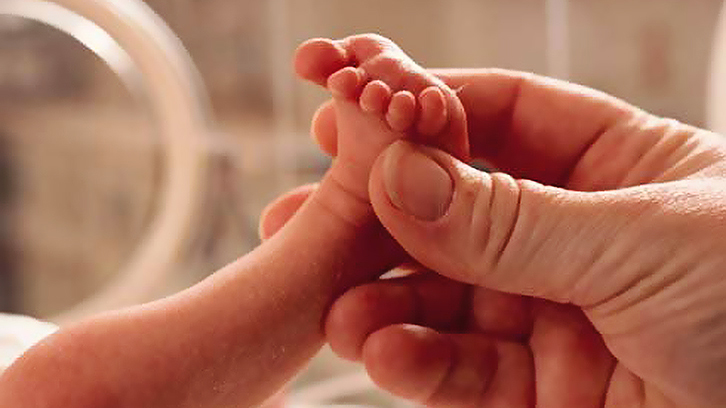Lung Ultrasound: Its Role In Neonatal Intensive Care Units

Over the last decade, ultrasound has been increasingly used in the critically ill patient. The intensive care physician obtains and interprets the images performing a bedside ultrasound: this avoids transferring the patient and gives quicker results than other diagnosis tests. Moreover, it does not use ionizing radiation allowing repeated exams.
Researchers from Hospital Parc Taulí from Sabadell (UAB) and Hospitals Clínic-Sant Joan de Déu (UB) want to study the applicability of ultrasound in neonatal intensive care units, whose patients are especially vulnerable to the effects of ionizing radiation.
Previous data on this topic has already demonstrated that neonatal lung ultrasound artifacts are similar to those of the adult and several authors have defined the ultrasonographic pattern of main neonatal respiratory diseases.
In their last project, this team aimed to analyse whether lung ultrasound was a useful tool to predict respiratory failure in neonates with respiratory distress.
Respiratory distressis a common cause of neonatal admission in intensive care units, most patients present favourable clinical course and do not need respiratory support, but some of them will need mechanical ventilation. Predicting the respiratory outcome may be useful for the clinician to prevent clinical deterioration and to arrange appropriate transfer.
Chest radiography is considered the gold standard test in the diagnosis of the leading cause of neonatal respiratory distress but it does not deal with respiratory prognosis and it is not an accepted follow-up tool due to the adverse effects of ionizing radiation.
This study included more than 100 newborns admitted in the neonatal intensive care unit of Hospital Sant Joan de Déu with respiratory symptoms. A lung ultrasound was performed at admission and diagnosis was made after image analysis. They found a high index of agreement between those diagnosis and the ones made by chest x-ray.
At the same time, stored images were classified into two groups according to the risk of respiratory failure. One in every five patients required mechanical ventilation and it could be adequately predicted by ultrasound.
This research project has been published in a journal with impact factor in the area of neonatology research. It was presented in the annual meeting of the European Society for Pediatric Research (ESPR) were it won the Bengt Robertson award 2015 given to young investigators in the area of the neonatal lung.
Taking these results into consideration, this research team concludes that it is key to promote training and accreditation in lung ultrasound of physicians working in neonatal units as well as to ensure adequate material is available to perform those examinations.
References
Rodríguez-Fanjul J, Balcells C, Aldecoa-Bilbao V, Moreno J, Iriondo M. Lung Ultrasound as a Predictor of Mechanical Ventilation in Neonates Older than 32 Weeks. Neonatology. 2016;110(3):198-203. doi: 10.1159/000445932.


